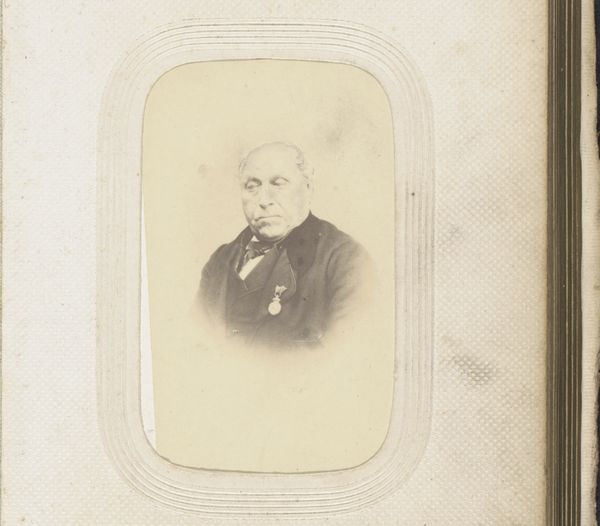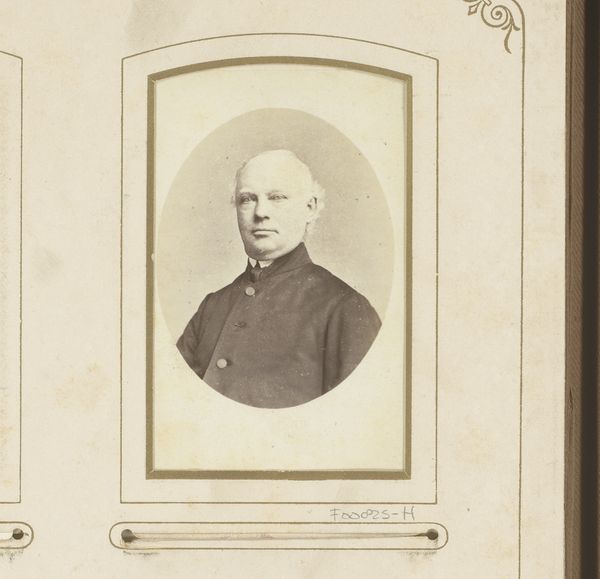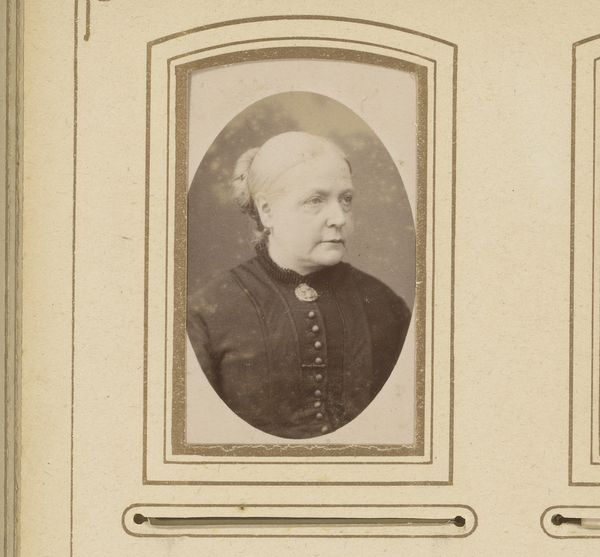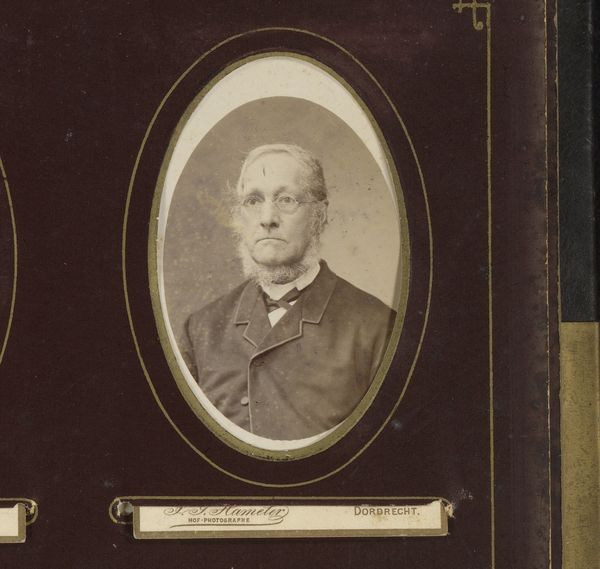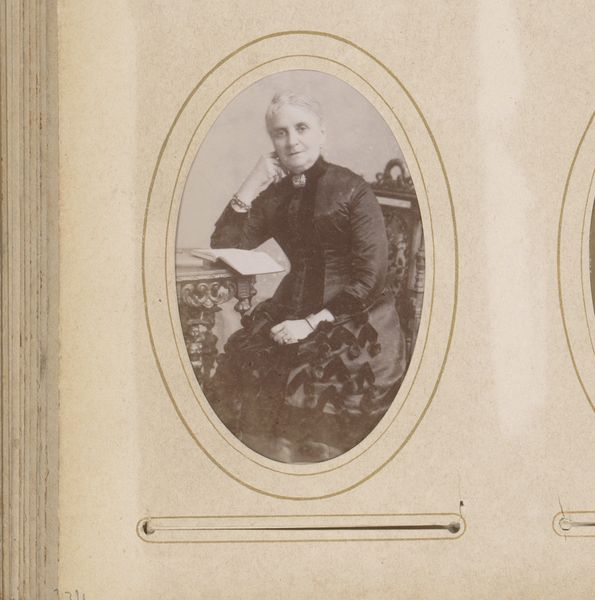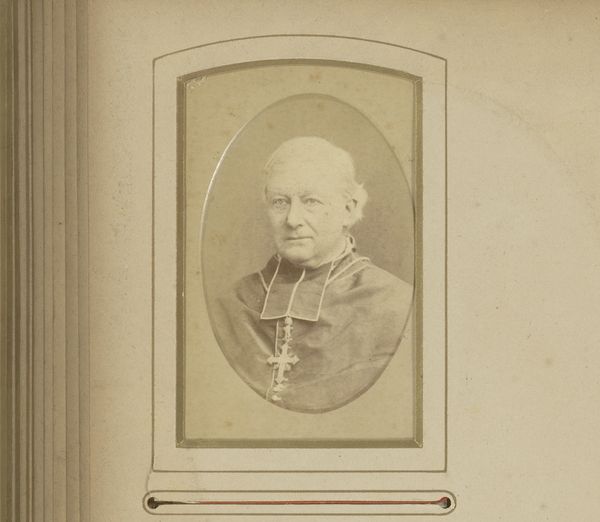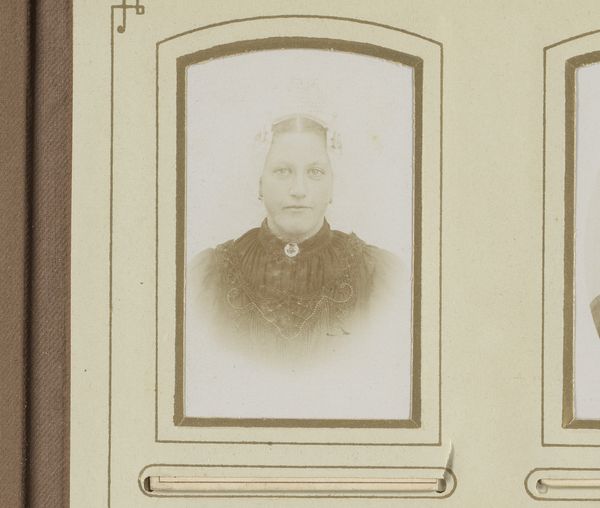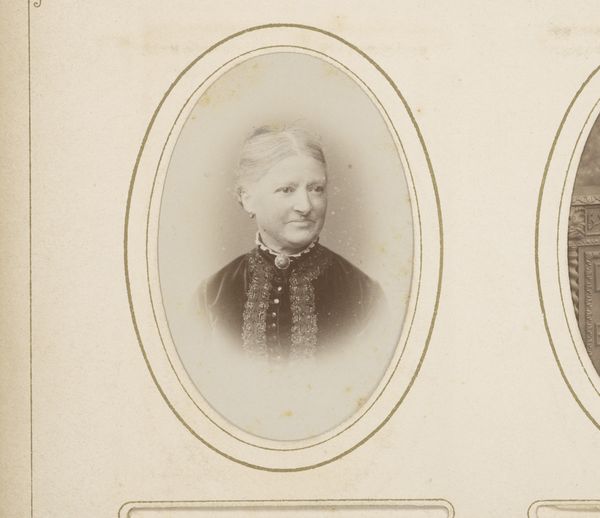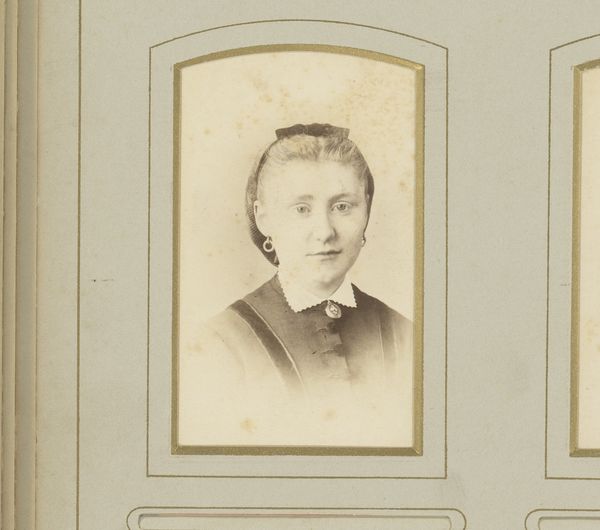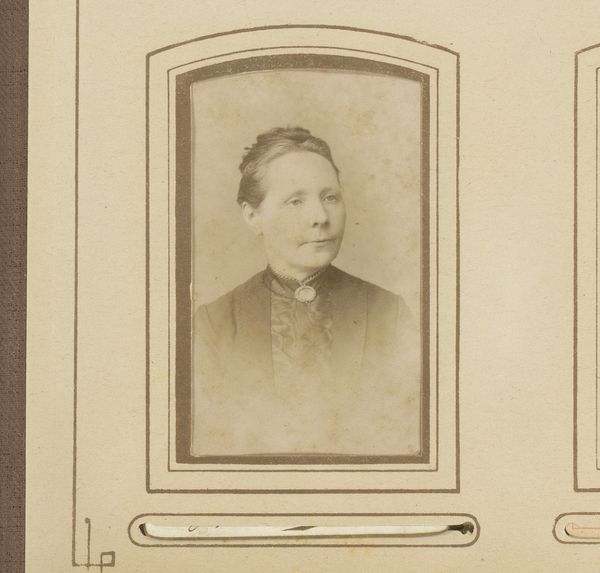
photography, albumen-print
#
portrait
#
yellowing
#
aged paper
#
toned paper
#
yellowing background
#
photo restoration
#
parchment
#
photography
#
yellow element
#
golden font
#
albumen-print
#
realism
#
historical font
#
columned text
Dimensions: height 86 mm, width 53 mm
Copyright: Rijks Museum: Open Domain
Curator: This is an albumen print simply titled, "Portret van een geestelijke," or "Portrait of a Clergyman," dating roughly between 1878 and 1887. It resides here at the Rijksmuseum. Editor: Immediately, I'm struck by its… gravity. There's a weight in his gaze, almost a sense of resignation, even amidst the formality of the photographic process. The oval vignette enhances the feeling of observing a preserved moment, like an important memory viewed through time. Curator: Yes, the use of the albumen process does lend a certain aesthetic. In its historical context, photographic portraits were still somewhat novel. They served as records, yes, but also as status symbols, familial keepsakes and ideological projections. Considering the subject, his vestments subtly but firmly communicate the sitter’s rank within the church hierarchy. The very act of commissioning the photograph places him within a network of social power. Editor: And how interesting, also, to think of photography itself as an emerging power, challenging painting’s role as the definitive mode of representation. His controlled gaze also has that performative tension related to portraiture—as this is inherently a power dynamic, of seeing and being seen within a frame of societal standards. What can be read in his posture of authority but also self-effacement? Curator: Indeed, consider the interplay between individual identity and institutional identity at play. He presents himself, not simply as himself, but as a representative of the church. The subdued color palette reinforces a sense of austerity but is also influenced by the limitations of early photographic processes. There’s an inescapable link between visual aesthetics and political/ideological intent. Editor: So this yellowing becomes also another indexical sign that embodies a sense of loss and cultural distance, in addition to the implied authority of its religious sitter and that era of societal dynamics that have largely shifted… I’m now considering what he sees when staring out into the lens, what shifts between our position viewing him, and how the image performs and reflects across centuries. Curator: Exactly! That's the enduring power of historical imagery. I appreciate how you emphasize the relational complexities that this single piece manages to evoke. It transcends a mere depiction, opening a layered discourse connecting identity, power, representation, and history itself. Editor: And for me, thinking about representation, considering that, it's how art invites these kinds of rich reflection through these portals.
Comments
No comments
Be the first to comment and join the conversation on the ultimate creative platform.

